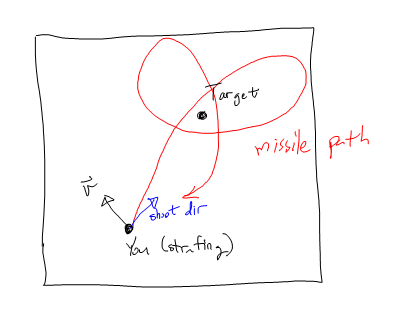I have a missile that does pursuit behavior to track (and try and impact) its (stationary) target.
It works fine as long as you are not strafing when you launch the missile. If you are strafing, the missile tends to orbit its target.

I fixed this by accelerating tangentially to the target first, killing the tangential component of the velocity first, then beelining for the target.

So I accelerate in -vT until vT is nearly 0. Then accelerate in the direction of vN.
While that works, I'm looking for a more elegant solution where the missile is able to impact the target without explicitly killing the tangential component first.

